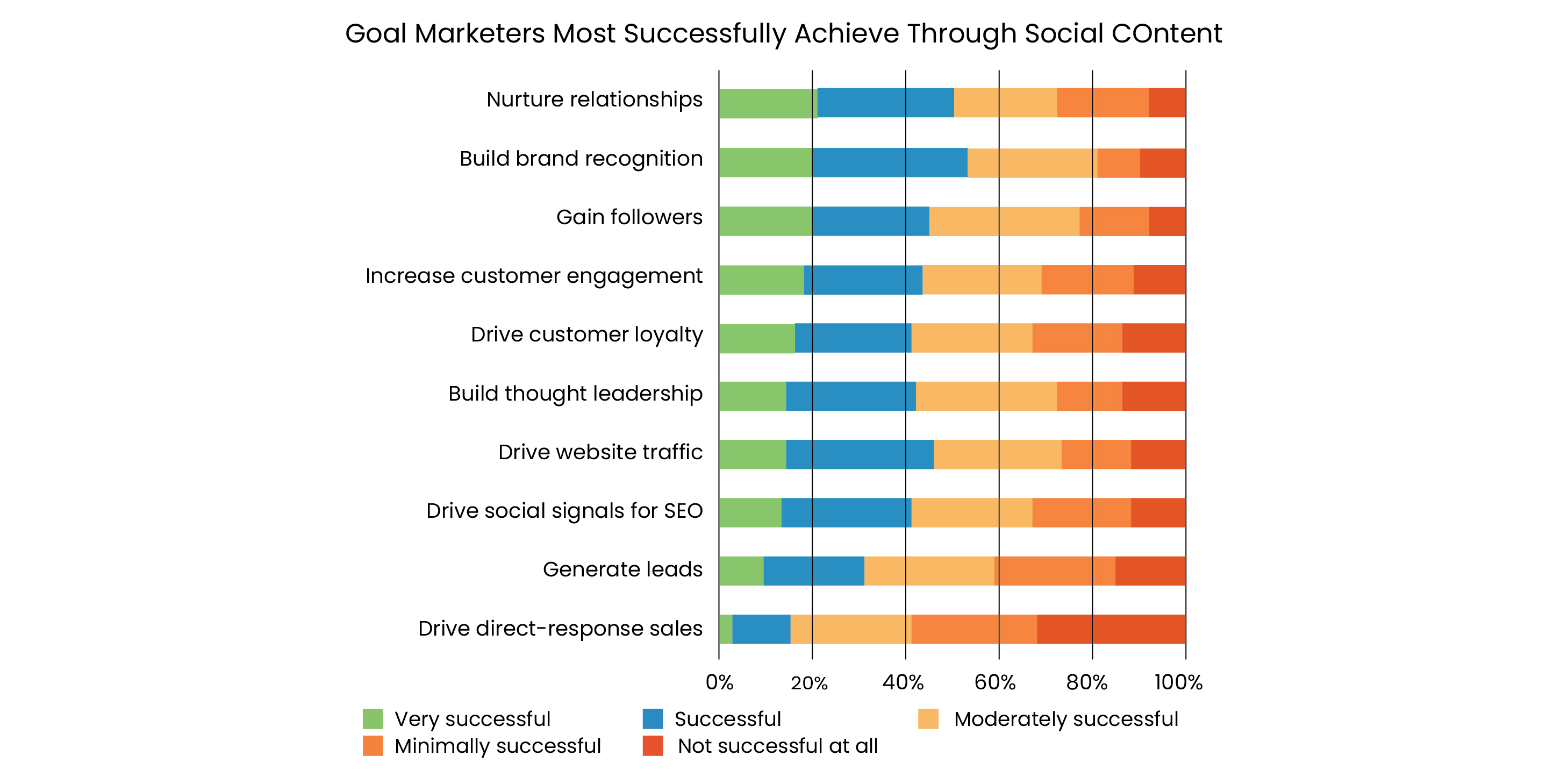Comprehensive Guide to Social Media Analytics
Where billions of individuals are actively engaged on social media platforms, businesses must seize the opportunity to connect with their target audience. The sheer magnitude of over 4.5 billion social media users worldwide underscores the significance of establishing a robust social media presence. However, the key to success lies not just in mere existence on these platforms, but in leveraging the power of social media analytics to drive meaningful outcomes.
According to Statista, 92.1% of U.S. marketers in companies larger than 100 employees use social media marketing, allocating $80.6 million to social media advertising in 2022. With 4.62 billion people using social media, a significant percentage rely on it to discover products (26.3%) and find inspiration (27.7%). To stay ahead of competitors, businesses must harness the power of social media analytics to understand its impact and drive meaningful results.
In the following article, we will explore the transformative potential of social media analytics, examining how businesses can leverage this valuable tool to elevate their social media presence, connect with their audience on a deeper level, and ultimately propel their success in the dynamic digital landscape.
What are Social Media Analytics, and Why Do You Need Them
Social media analytics plays a crucial role in understanding and optimizing your marketing efforts. By utilizing social media analytics, you can gain valuable insights that directly contribute to your business's success. Here are some key reasons why social media analytics is important:
Audience Understanding: Social media analytics helps you develop a deeper understanding of your target audience, including their demographics, preferences, and online behavior. This knowledge enables you to tailor your content and messaging to resonate with them effectively.
Platform Optimization: By analyzing social media data, you can identify which platforms receive the most traffic and engagement from your target audience. This allows you to focus your efforts and resources on the platforms that yield the best results.
Content Performance: Social media analytics allows you to measure the performance of your content in terms of conversions, engagements, and other key metrics. By understanding what type of content performs best, you can optimize your strategy and create more engaging and effective posts.
Audience Engagement: Through social media analytics, you can uncover the types of posts that have the highest reach and resonance with your audience on specific platforms. This insight helps you craft content that captures their attention and encourages interaction.
Campaign Evaluation: Social media analytics provides valuable data on the success of your campaigns and ads. By analyzing this information, you can assess what is and isn't working, make data-driven adjustments, and optimize your future campaigns for better results.
Strategic Planning: Utilizing social media analytics allows you to develop a comprehensive and data-backed social media strategy aligned with your business's specific goals. It enables you to make informed decisions and allocate resources effectively to drive marketing, sales, and service efforts.
What Should You be Tracking?
Measuring the impact of social media marketing on a business's bottom line is a top priority for most marketers. Understanding whether social media efforts positively influence business outcomes is essential for making informed decisions and optimizing strategies. While platforms like Facebook and YouTube provide social media analytics for advertising campaigns, analyzing the effectiveness of organic social media marketing can be more challenging. However, various metrics offered by social networks offer valuable insights into audience growth, demographics, content reach, and engagement.
Tracking the growth of your audience over time provides valuable data on what contributes to increased followers and identifies factors that may result in a loss of followers. Understanding the demographic makeup of your audience is crucial, ensuring that your content resonates with the right target market. This becomes particularly important if your business caters to specific regions or demographics.
Evaluating the reach of your content helps gauge brand awareness, allowing you to identify the types of content that generate more impressions and wider audience exposure. Engagement metrics such as likes, shares, and comments offer insights into the types of posts that not only reach your audience but also encourage active participation and interaction.
Monitoring competitors through social media analytics tools allows you to assess their performance, identify active and engaged audience segments, and understand the content that resonates most with your target market.
While metrics related to audience growth, demographics, and content engagement may not directly reveal the specific tactics that drive leads or sales, they provide valuable indicators of whether your marketing messages are reaching the intended audience and influencing them.
In the absence of an audience, misalignment with your ideal customer demographic, or lack of engagement with your content, it becomes evident that your current social media marketing approach is not meeting business goals. This realization highlights the need for a strategic shift and a refined approach to social media marketing.
Low impressions and limited engagement indicate that your target customers may not receive your marketing messages or progress through the sales funnel as desired. These insights signal the need to reevaluate your content strategy and optimise your approach to captivate and convert your audience effectively.
How Can You Leverage Social Media Analytics?
1.Get SMART With Your Strategy
Setting SMART goals is essential to drive meaningful insights and maximize the impact of your social media strategy. By following this framework, you can align your goals with clear objectives, track progress, and optimize your approach efficiently.
Here's a step-by-step guide to help you create and achieve SMART goals for your social media analytics strategy.
Specific Objectives: To begin, identify the insights you aim to gain from your social media analytics. Determine what key data points you want to uncover to assess the effectiveness of your marketing tactics, such as understanding which posts and campaigns resonate best with your audience and drive engagement.
Measurable Metrics: Next, define the metrics that will enable you to track your progress and evaluate the success of your social media efforts. These metrics could include parameters like reach, impressions, engagement rates, click-through rates, conversion rates, or any other relevant indicators that align with your specific goals.
Attainability: It's crucial to set goals that are realistic and attainable. Assess your available resources, technology tools, and team capabilities to ensure that you can gather and analyze the necessary data effectively. Consider identifying a reasonable number of specific data points that you can realistically track and analyze within your given resources and time frame.
Relevance: Ensure your goals align with your overall social media strategy and support your broader marketing objectives. The chosen data points should provide valuable insights that help you measure success, identify areas for improvement, and optimize your social media strategy accordingly.
Time-bound Deadlines: Assigning a specific time frame to achieve your goals adds a sense of urgency and accountability. Define a timeline for when you aim to identify the chosen data points. For example, you could set a target of one month to gather and analyze the data, allowing sufficient time to derive meaningful insights and take actionable steps based on the findings.
2. Know What Metrics To Track
Effort can only achieve their true potential when they are well directive and have forethought behind them. This is why it is vital that you know what exactly you need to track and focus your energy on. While metrics can vary across platforms and analytics tools, there are some universally applicable metrics that can provide a comprehensive overview of your social media performance.
Here are the key metrics to consider when tracking your social media analytics:
Reach refers to the total number of individuals who have seen your content. It provides an indication of how far your content has reached and the potential audience size.
Engagement encompasses various interactions with your content, including likes, shares, comments, and clicks. Tracking engagements helps gauge the level of audience interaction and the effectiveness of your content in driving engagement.
Impressions represent the number of times your content has been displayed on someone's feed or timeline. It indicates the potential visibility and exposure of your content.
Mentions occur when audience members or other companies reference your business and brand on social media. Monitoring mentions allows you to understand how your brand is being talked about and mentioned in the social sphere.
Social ROI (Return on Investment) provides insights into the impact of your social media marketing efforts on key business metrics such as customer acquisition, sales, brand awareness, and customer loyalty. It helps assess the effectiveness of your social media investment.
Social listening involves monitoring conversations about your business and brand on social media. By listening to what customers and audience members say about your brand, you can gather valuable insights, identify sentiment, and respond effectively to customer feedback.
Likes indicate when an audience member shows their appreciation for your social content by tapping or double-tapping on it. Likes signify audience engagement and positive sentiment towards your posts.
Retweets, shares, and reposts occur when audience members reshare your published content on their own profiles. These actions extend the reach of your content and amplify your brand's visibility.
3. Measure and Track
Once you have implemented your social media analytics software, you gain the ability to measure the success of your social media efforts accurately. To effectively evaluate your performance, you need to utilize the features provided by your analytics tool. This may involve creating customized reports and dashboards or extracting specific details about the data points that are most relevant to your business.
Alongside utilizing your analytics software, it is essential to reflect on the following questions to assess your success further:
Have you successfully accomplished your SMART goals?
Assess whether you have achieved the specific, measurable, attainable, relevant, and time-bound goals you set for your social media campaigns. Analyze the data to determine if your efforts align with your intended objectives.
Have the selected metrics provided valuable insights for your business?
Evaluate if the metrics you focused on have provided a meaningful narrative about your social media performance.
Consider whether the chosen metrics have offered actionable information to enhance your strategy, drive engagement, and achieve your desired outcomes.
Has the implemented software or tool met your business needs?
Evaluate if the social media analytics software or tool you implemented has effectively supported your business requirements. Consider factors such as ease of use, data accuracy, reporting capabilities, and the ability to generate actionable insights. Determine if the tool has provided the necessary features to measure and optimize your social media performance.
In Conclusion
By effectively tracking and leveraging social media analytics, you can significantly enhance your audience reach and achieve improvements in key ROI factors such as engagement, conversions, and customer loyalty. To maximize the benefits, it is crucial to identify the best tools and software for your specific needs and establish a robust system for monitoring and analyzing social media analytics.
If you're looking to optimize your social media strategy, consider hiring a social media expert who can provide invaluable insights and guidance tailored to your business goals. They can help you navigate platforms like Twitter, Instagram, Facebook, and Linkedin advertising, enabling you to target and engage your desired audience effectively.
To take your social media efforts to the next level, partner with a trusted agency like Saffron Edge. As a leading provider of digital marketing solutions, we offer expertise in social media advertising, including Twitter, LinkedIn,Facebook, and Instagram ads. Our team of specialists can help you create impactful campaigns that drive results and maximize your ROI. Contact us today! ...
read more 











